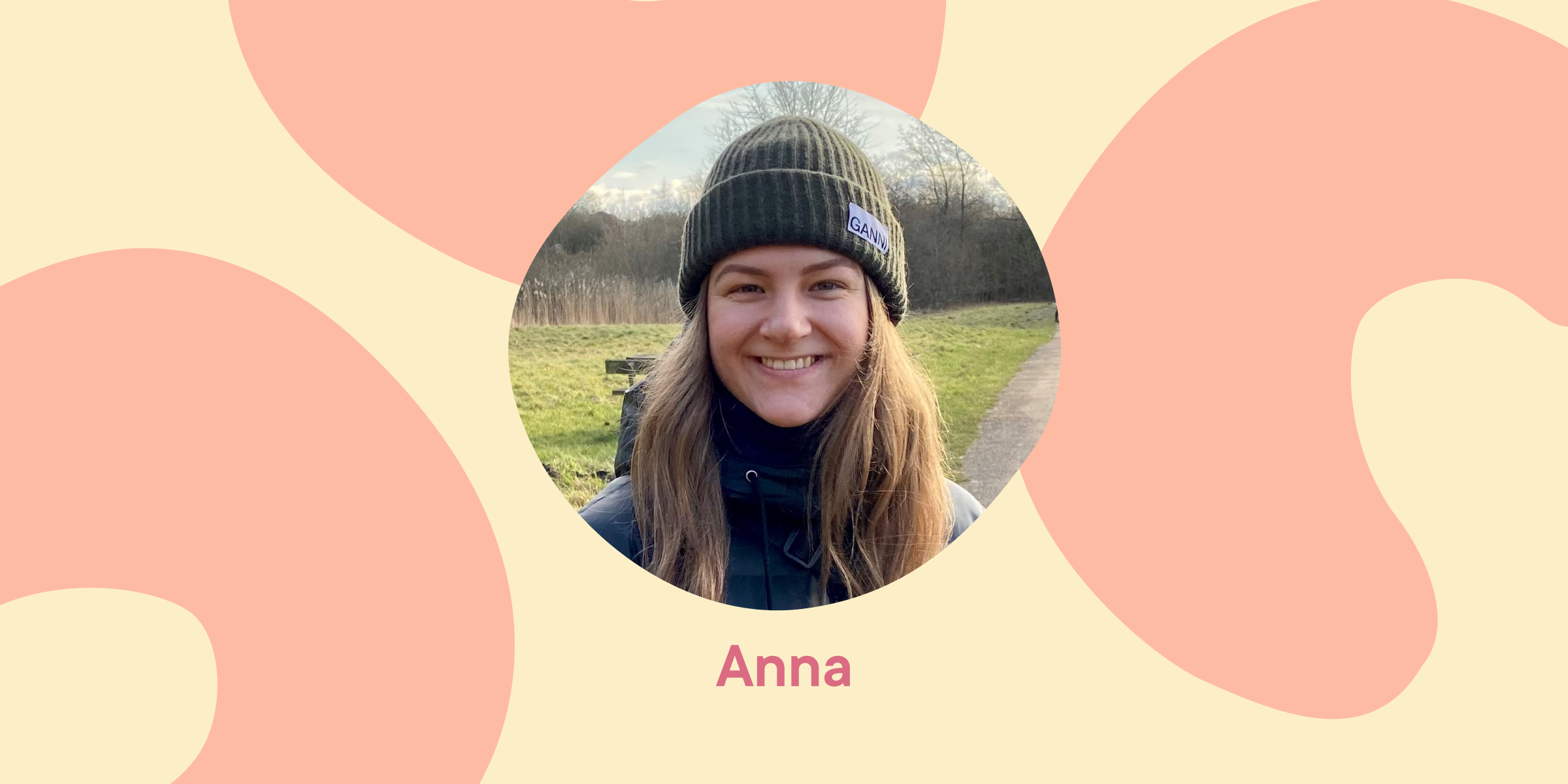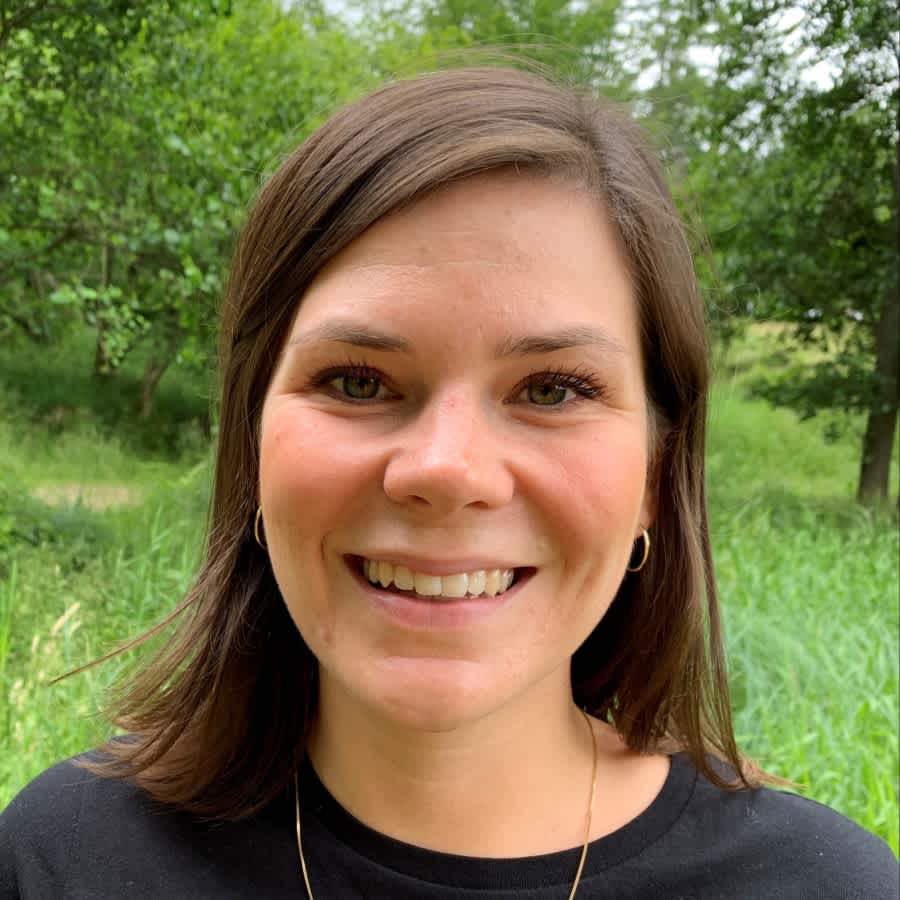Illustrations by Emma Günther and Marta Pucci. Photograph provided by Anna.
I didn’t know I had a bleeding disorder
Anna thought her unexplained bruises and extremely heavy periods were just something she had to live with.
This article has been translated and edited for clarity. The original article can be found in Danish here.

Have you ever sat on a wicker chair and had an imprint of the woven pattern on the back of your legs when you stood up again? Sure, who hasn’t, right? Now imagine if, instead of just an imprint, when you got up your skin was actually bruised in that pattern. Just from sitting on it. This was quite normal for Anna.
From her first period, she’d felt her body was different. Not in the sense of the usual awkwardness we all feel when we hit puberty. Apart from the unusual and unexplained bruising, Anna also had extremely heavy periods. The largest night pad on the market was her only option to manage her flow, but she thought she’d simply gotten the short end of the stick when it came to periods.
She always carried extra underwear and numerous maxi night pads in her bag, and constantly feared bleeding through them. "When I was 13, my mother took me to the doctor, where I explained that I was bleeding excessively. The doctor sent me to a gynecologist who examined me. At the time, no one noticed the signs that I might have a bleeding disorder. So, I just had to live with being the one who bled a lot," says Anna.
When a tampon doesn’t cut it
Thinking back to her elementary school days, Anna remembers missing out on so much when she was on her period: "At one point, we were going on an excursion to the forest. I remember having to tell my mother: I simply cannot go. I can't sit out in the middle of a forest and practically pee blood. Just the thought of not being able to go to the toilet to change my pad terrified me. Although I really wanted to, there was just no way I could go."
As a way to manage life with heavy periods, Anna would use Clue to track her cycle so she could plan around it: “While I couldn’t control my periods, I could at least not be surprised by them.”
Beach holidays were always a challenge. “A tampon just didn't cut it for me. If I had my period, I wouldn't go in the water. I made the best of it by getting some swim shorts and wearing a pair of regular underwear and a maxi pad underneath. I just accepted that that's how it was for me, and I had to find ways around it."
Blood and bruises
Fortunately, when Anna got an IUD, her heavy periods disappeared: "It felt like a gift from heaven. I could wear a regular pad while on my period, and not even worry about bleeding through and soaking my pants."
While her heavy periods were gone, Anna became more aware of other unexplained symptoms that weren’t remedied by the IUD.
"I couldn’t floss without starting to bleed, and I would bruise so easily. Even just carrying a tote bag on my shoulder, would give me blood spots under my skin where the straps had been."
A chance diagnosis
In 2021, during a checkup for an unrelated issue, Anna had tests done at her regular GP clinic. By chance, a new doctor who had recently taken over, noticed something unusual in the routine blood tests, and referred Anna to the local hemophilia center. That was the first time it had ever been recommended that she should be examined for a bleeding disorder.
A few months later, when Anna was 22, she finally had a diagnosis: "You have von Willebrand's disease."
While getting that type of news is not typically a reason to celebrate, Anna felt enormous relief. Finally, there was an explanation for what she had previously thought to be unrelated and unexplained symptoms—all things she thought she just had to live with.
"It was a strange feeling. It meant a lot to get clarity and gave me a new understanding of myself and my body. I now had access to tools and information to help me make decisions," she remembers.
"At the same time, I realized how I hadn’t been fully heard or seen by my former doctor or the gynecologist I'd been going to for so long. I'm sad that no one took me seriously and took the time to investigate properly to see if anything could be the underlying cause of my heavy periods. It angers me that it took ten years for a doctor to finally discover something in a blood test."
"Being diagnosed with a bleeding disorder has made my life easier and, most importantly, safer," Anna says optimistically. But she knows she still has a lot to learn about her diagnosis.
Know your body, and take action
"I would encourage anyone who experiences symptoms similar to mine to take action. Bleeding disorders are rare, and not all doctors recognize the symptoms. I wish I had pushed harder to receive an examination and a diagnosis earlier, as help is available if you know you have a bleeding disorder," reflects Anna.
Tracking your period can be a helpful way to visualize unusual bleeding patterns and symptoms, providing a clear, holistic picture for a doctor to see and understand your unique patterns and concerns. Anna had often been bleeding for more than seven, and sometimes even 10 days a month.
"I’m sharing my story because I didn’t have someone to look to when I was diagnosed. Even though von Willebrand's disease is the most common bleeding disorder, not many people know about it. I want to help spread the word."
Do you have consistently heavy, long periods or any other symptoms that are disrupting your life? We recommend tracking your cycle with Clue and discussing your cycle history and patterns with a healthcare provider.

